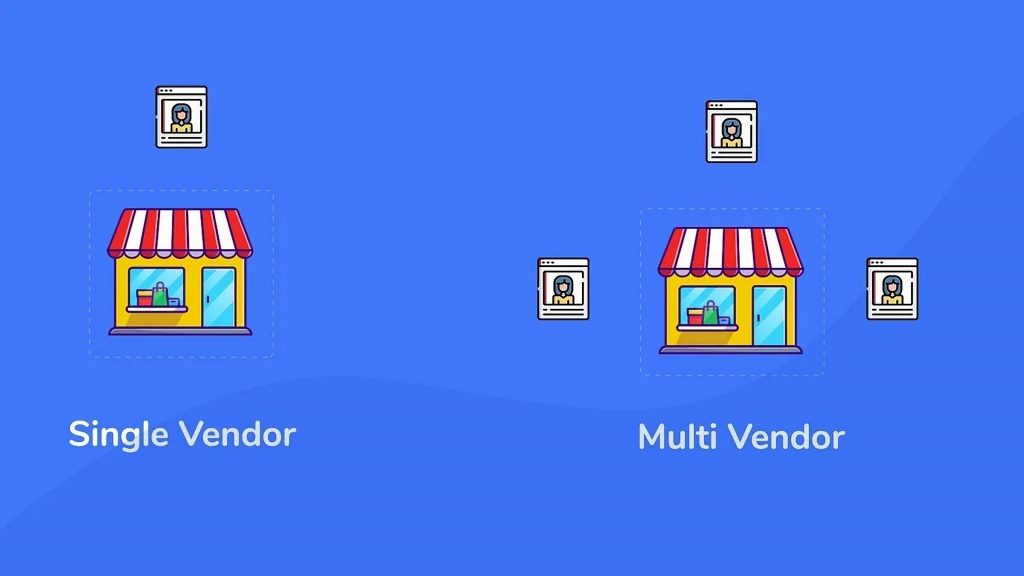Single Vendor VS Multi-Vendor: Which One Should You Choose For Dropshipping?
- 05/11/2022
- Philip K
Multi-Vendor or single vendor? Start thinking about it when you open this page.
When you first enter the dropshipping industry and online marketplace, you may consider what kind of vendor to choose to cooperate with. But after you have cooperated with the same vendor for a long time, you will find that there are many problems.
For example, your vendor cannot provide a product that satisfies your customers, or there is a disruption in the supply chain, or your single vendor is too expensive. Do you have any other options at this time? certainly! This is where the benefits of having multi-vendor come in.
If you are considering which one of these is more suitable for your business, follow this page as we compare single vendors vs multi-vendor and help you decide which one is more profitable for you.

What is a Single Vendor?
Single vendor refers to allowing customers to purchase their products or services from only one vendor. This means you can only work with one company. In a single-vendor market, there is usually not a wide range of products or services available, but it will be easier for you to deal with just one vendor. So what are the advantages and disadvantages of using a single provider?
What is a Multi-Vendor?
Multi-vendor means that your online store can work with multiple vendors that provide products and services.
In a multi-vendor marketplace, your customers can choose and buy from the different products that you offer from multi-vendors. But they don’t know that these products come from different vendors. As for you, for the same product, each vendor offers different prices and specifications, and you can also choose the best one. So what are the pros and cons of using multi-vendor?
Single Vendor VS Multi-Vendor: Key Differences to Consider
Running a multi-vendor store is less risky. On the one hand, it is reflected in the fact that you can diversify your products, which has a greater chance of success than sticking to only one niche market. On the other hand, since you are not directly responsible for inventory, the responsibility falls on multiple vendors.
At the same time, when you only cooperate with a single vendor, once your vendor cannot meet the demand or has other problems, it will directly affect your business, but you have no backup plan. Multi vendors can provide backup plans, reducing risk.
Multi-vendors offer a wider selection of products, and you can view the best quality products from them. But you still need to pay attention to whether your partner is reliable. This may take some time on your part.
Whereas with a single-vendor store, if your customers are not satisfied with what you offer, they will switch to another store. Individual vendors may be in order to save time and may have substandard product quality.
Traffic essentially corresponds to the market you choose. That is, which types of platforms and marketplaces your e-store is selling online on? Either is an option, and there may be more traffic on a multi-vendor site. Single-vendor sites require you to be solely responsible for the marketing yourself.
The pricing model of a single vendor is relatively fixed. Multi-vendor pricing structures are more complex. Generally speaking, the cost of developing multi vendors will be higher. And a single vendor is relatively cheap. But that doesn’t mean it’s always the case. When you have multi vendors, you may want to shop around for prices. Finally, no matter which one you choose, you need to ensure the quality of products and services.
Multi-vendor service cost is higher, but can better meet customer needs. Individual vendors have low operating costs but their service quality is not satisfactory.
Multi-vendor development cost is high, which can help enterprises to expand the business as fast as possible and occupy the market advantage. Single vendor price is low, but the market quality of the expansion is uneven, and can not be guaranteed.
5 Factors to Consider When Deciding between Single Vendor vs. Multi-Vendor
Multi-vendor – it is your responsibility to integrate everything. With multiple systems and lots of details, few external vendors can integrate everything into a unified whole.
Multi-vendor – Multi-vendor solutions typically require more effort to put in place, as you must coordinate the integration of different (and potentially incompatible) systems.
Multiple vendor updates are more focused on partial features of the overall upgrade.
Multi-vendor – the price will be higher because you will be forced to purchase multiple modules to make up your solution.
Multiple suppliers – more work – you have many different suppliers to negotiate contracts with and not every contract has the same term and/or is renewed at the same time, if at all!
Conclusion
When choosing a solution, whether single or multi-vendor, the most important thing to remember is that it’s flexible: You should be able to customize the platform to meet your specific business needs. A platform is useless if it doesn’t scale as you grow, or if it can’t adapt when new features are needed.
Whether single or multi-vendor, you can directly outsource your operations and services to third-party companies. They can all help you achieve that. We are Honest FulPhilment, providing eCommerce fulfillment solutions to a range of companies. Among the more than 1000 suppliers we cooperate with, we can always find the most suitable one for you. Please feel free to contact us if necessary.
FAQ about single-vendor and multi-vendor:
Need a Quick Quote?
– Competitive price
– Quote within 24 hours
– 30+ Shipping methods
– Dedicated account manager
– Shopify/Woo integrations
– Autofulfil
– Auto tracking
– Plus much, much more

5 Best Wholesale Home Decor Suppliers 2023



10 Best Bikini Brands For Summer 2023








